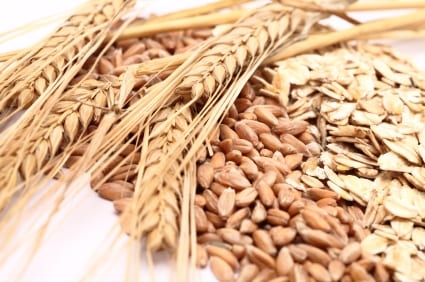 As kids, our mom would send us off to school every day with a brown bagged PB&J sandwich on whole wheat bread. Back then, which was many more years ago then we like to admit, we were the only ones at the kindergarten lunch table whose sandwiches weren’t on white bread. We both remember feeling left out. But when we finally begged our mom to try the white bread, it stuck to the roof of our mouths so much that we wondered how the other kids could bear to eat the stuff…
As kids, our mom would send us off to school every day with a brown bagged PB&J sandwich on whole wheat bread. Back then, which was many more years ago then we like to admit, we were the only ones at the kindergarten lunch table whose sandwiches weren’t on white bread. We both remember feeling left out. But when we finally begged our mom to try the white bread, it stuck to the roof of our mouths so much that we wondered how the other kids could bear to eat the stuff…
Boy, have times changed!
By now most people have heard that whole grains like whole wheat bread are much healthier than their refined “white” counterparts; and tons of kids have lunch boxes filled with sandwiches on whole wheat bread.
Yet surprisingly, our clients tell us that they aren’t really sure why whole grains are healthier. Here’s the truth – whole grains are SO much healthier than refined one. To the point that the FDA says you should get at least half of your grain servings (at least 3 ounces per day) from the whole grain. But we want to go a step further. We think you should try to make all of your grains, whole grains.
What Makes A Whole Grain Different Than A Refined One?
Both grains come out of the ground in their natural state — as a whole grain, consisting of three parts: bran (healthy, outer layer), germ (healthy, core) and the endosperm (starch).
When grains are refined through processing, their bran and germ are removed, which takes away many of the grain’s nutrients, and leaves just the starch.
This means that the refined grains are stripped of all their good stuff: fiber, antioxidants, tumor suppressors, cholesterol reducers, insulin regulators, antithrombotic agents, phytoestrogens, and vitamin E, folic acid, zinc, selenium, and magnesium. Since a whole grain still has all these goodies, it’s the obvious nutritional winner.
Get Your Game Face On – Don’t Get Tricked When Shopping For Whole Grain
When you venture down the bread aisle looking for whole grain, it’s easy to assume that darker colored breads are whole grain choices. Don’t be tricked! The darker color may simply mean that caramel coloring or molasses has been added, not that you are picking a whole grain. Argh!
Another common trap: many people assume that because a grain says 7-Grain, 9-Grain or Wheat Bread, it’s a whole grain bread. But this isn’t always the case. Use the ingredient label to identify the good stuff! The next time you’re on the search for grain, whether bread, pasta or rice, look at the food label and find the part labeled “ingredients.” The only way to guarantee that a food is made from a whole grain is if the first ingredient listed on the nutrition label has the word “whole” in it. Some examples are whole wheat (also known as graham flour), whole rye, whole oat, whole barley, etc.
Don’t be tricked by fancy wording like, “enriched bromated wheat flour” – that’s nothing more than refined flour! Remember, all you need to see is the word “whole” before the grain.





